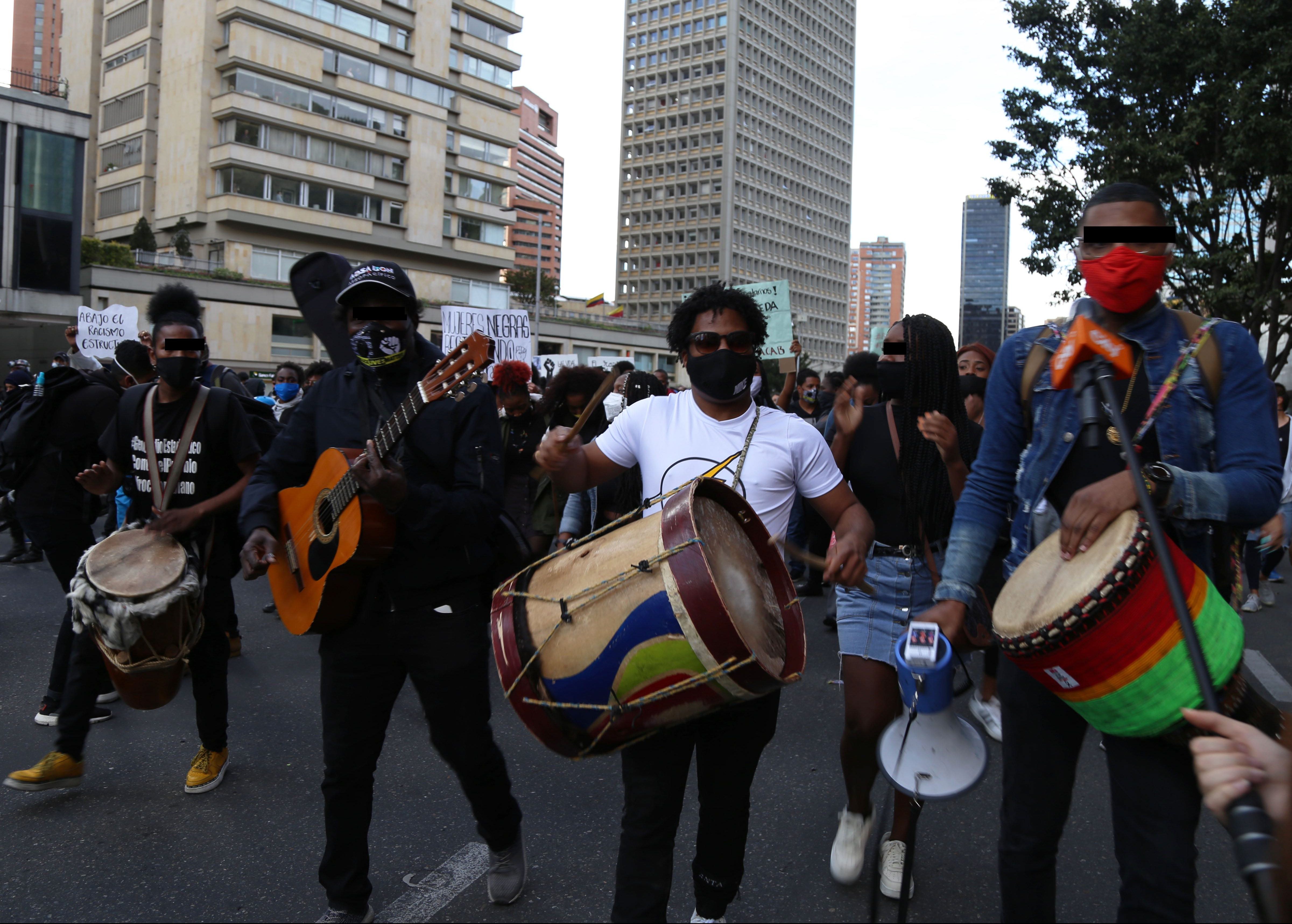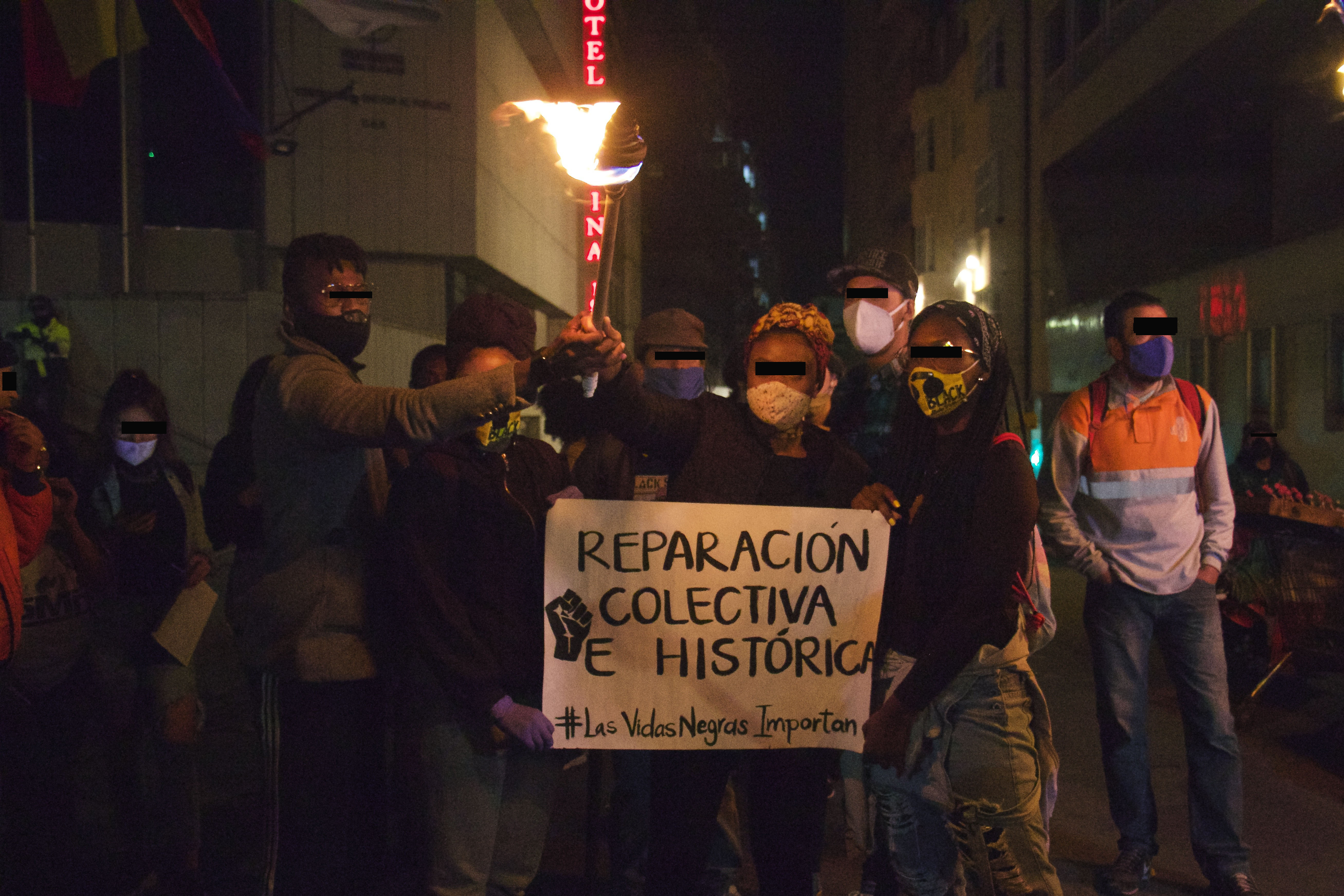“Who killed him? It was the police! Who killed him? It was the police, it was the police,” a crowd of hundreds of protesters chanted on June 15 in downtown Bogotá, Colombia. They were accompanied by drums, guitars and palo seco (a percussion instrument made of wood and filled with seeds). This blunt arenga (a protest chant) was just one of the many songs protesters used to express outrage against racism and systemic murders of black men and women in the country.
The protests also took the streets of Puerto Tejada, a small town in the southwestern part of the country. They were there to claim justice for Anderson Arboleda, a young Black man who was killed on May 22, after he was cruelly beaten in the head and killed by police on the doorstep of his home.
Medellín, Cali and Buenaventura have also taken a stand against racial violence this month, motivated by the wave of global protests prompted by George Floyd’s assassination in Minneapolis. They’ve joined others in sharing their frustration with a translated hashtag: #LasVidasNegrasImportan.
In Bogotá, protesters gathered in front of the National Museum. Many of them were part of young black organizations such as Proceso de Comunidades Negras (PCN) and Matamba (an Afro-feminist collective) as well as arts organizations and Black study circles. Human rights defenders and others were there “to raise awareness of the systemic and selective murders of young black people by the police,” member of PCN Jeiner Arizala tells Remezcla.
“Aboleda’s assassination in Puerto Tejada is not a new phenomenon, this is the state-sanctioned violence that always has happened,” Arizala says. “In the outskirts of Bogotá, like Bosa or Ciudad Bolívar, young black people are arrested daily and physically abused by the police.”

Indeed, Arboleda’s was not an isolated case. Janner García, a 22-year old aspiring soccer player, was also killed by the police in Puerto Tejada in May. Estella Valencia Trujillo, 50, was also recently shot by the police during a curfew in Buenaventura (in the Colombian Pacific) while she was looking for her son in her neighborhood.
According to statistics compiled by ILEX with data from some Bogotá´s boroughs, “an Afro-Colombian is 14.27% more likely to be fined than a white/mestizo.” Still, there is no consolidated data on police brutality against Black people across the country.
The protests that have sparked in the U.S. have resonated here.
“The murder of Black people, police brutality, the racism and classism that are seen in other countries, as well as all this movement that started in the United States with George Floyd’s murder has motivated us much more,” says Sheira Gómez, a 22-year old artist who is part of the Black youth movement and the Conferencia Nacional de Organizaciones Afrocolombianas (CNOA).

“We cannot remain silent. We are people, we feel,” adds Gómez, who says she was at the march to denounce the violence and racism against Black women, specifically.
“Black women have been silenced, invisible and hypersexualized over the years. We are tired of it. Black women’s femicides also matter. Black women are not willing to remain silent like our ancestors. Now that we have a voice, we can speak out for the women who are no longer here,” she explains.
The abuse that Black women face is now on the rise. Domestic violence and Afro-femicides have been prevalent in the country during this lockdown. Two Black women, Ana Fabricia Córdoba and Ana Mercedes Rivas, were murdered by their partners in Medellín, according to the Colectivo Matamba, while the Colombian Observatory on Femicide reported 104 femicides during quarantine thus far.
More than half of the protesters in Bogotá were Black women. Some of them performed dance routines, others traditional Afro-Pacific steps. As Gómez says, “The simple act of dancing in front of the police is a form of resistance. The sound of the drums moves the energy, we make it clear that we are a block, a strong energy, that we are warriors and female warriors and that we are not going to take a step back.”

Around 6 p.m., the crowd was dispersed by the police and the protest was divided. The city mayor, Claudia López, ordered hundreds of police and ESMAD (Colombia’s anti-riot squadron) officers to violently crush using tear gas and stun grenades to disperse the peaceful protest, under the excuse of stopping alleged vandalism acts.
But a big crowd of Black people came back an hour later to remember the victims killed by the police in front of a government building. “We got to the Office of the Ombudsman and did a symbolic act [when we] lit the torches for all the Black lives that have been extinguished as a result of police brutality,” Gómez recalls.
Protesters and feminist collectives plan to keep mobilizing people in the country.







